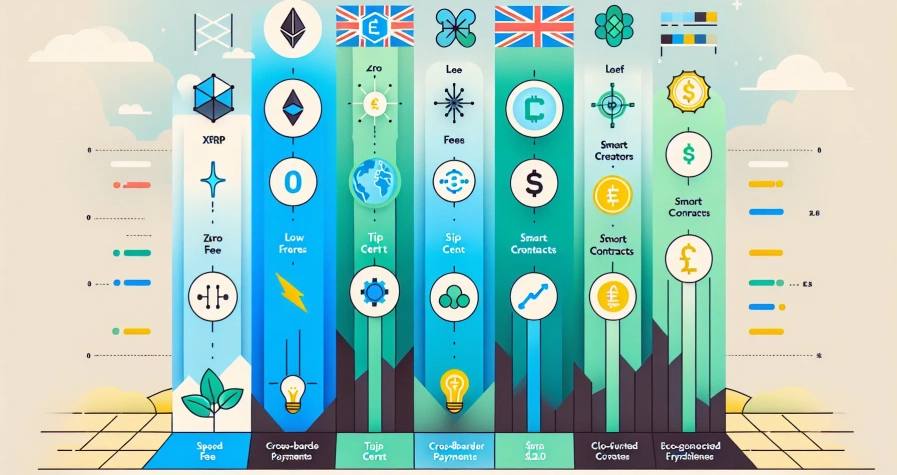You’ve probably heard the term “tokenomics” thrown around in cryptocurrency discussions, but what does it actually mean? If you’re new to the crypto world, this concept might seem daunting at first glance. Simply put, tokenomics combines “token” and “economics” to describe how digital tokens work within their respective blockchain ecosystems.
Understanding tokenomics is crucial if you’re considering investing in cryptocurrencies or participating in decentralised finance (DeFi) projects. It’s the economic framework that determines how tokens are created, distributed, and managed over time. Think of it as the monetary policy for digital assets.
Whether you’re looking to make informed investment decisions or simply want to grasp how modern digital economies function, mastering tokenomics basics will give you a significant advantage. This knowledge helps you evaluate projects more effectively and understand the long-term viability of different cryptocurrency ventures.
What Is Tokenomics? A Basic Definition
Tokenomics represents the comprehensive economic model that governs how digital tokens function within blockchain networks. The term combines “token” and “economics” to describe the fundamental principles that determine a cryptocurrency’s value proposition and sustainability.
You encounter tokenomics whenever you interact with any cryptocurrency project. This economic framework defines how tokens get created, distributed amongst participants, and utilised within their respective ecosystems. Tokenomics encompasses the rules that control token supply, demand mechanisms, and the incentive structures that motivate network participants.
The core components of tokenomics include:
- Token supply mechanics – total supply limits, circulating supply, and inflation rates
- Distribution methods – initial coin offerings, airdrops, mining rewards, and staking distributions
- Utility functions – governance rights, transaction fees, staking rewards, and access privileges
- Burning mechanisms – token destruction processes that reduce total supply permanently
- Vesting schedules – time-locked token releases for team members and early investors
Effective tokenomics creates sustainable economic incentives that align the interests of developers, investors, and users. The model determines whether a project can maintain long-term value and attract ongoing participation from its community.
Your understanding of tokenomics directly impacts your ability to evaluate cryptocurrency investments. Projects with well-designed tokenomics typically demonstrate clear utility for their tokens, balanced supply and demand dynamics, and transparent distribution mechanisms that prevent excessive concentration amongst early adopters.
Tokenomics differs significantly from traditional economics because it operates within decentralised networks where governance decisions get made through community consensus rather than centralised authorities. This structure creates unique opportunities and challenges that don’t exist in conventional financial systems.
Core Components of Tokenomics
Understanding tokenomics requires examining three fundamental elements that shape how digital tokens operate within their ecosystems. These components work together to create the economic foundation that determines a cryptocurrency’s market behaviour and long-term sustainability.
Token Supply and Distribution
Token supply encompasses two critical metrics that directly influence your investment decisions. Total supply represents the maximum number of tokens that can ever exist, while circulating supply indicates the tokens currently available for trading on exchanges.
Supply mechanics create price pressure through scarcity or abundance dynamics. Bitcoin’s fixed cap of 21 million tokens exemplifies deflationary tokenomics, whilst projects like Ethereum implement variable supply models based on network demand.
Distribution models determine how tokens reach the market and affect ownership concentration:
- Initial Coin Offerings (ICOs) allocate tokens to early investors at predetermined prices
- Airdrops distribute free tokens to existing wallet holders or community members
- Mining rewards compensate network validators for securing blockchain transactions
- Staking rewards incentivise token holders to lock their assets for network participation
Fair distribution prevents centralised control and promotes decentralisation, making projects more resilient to market manipulation.
Token Utility and Use Cases
Token utility defines the practical functions your tokens perform within their native ecosystems. Strong utility creates consistent demand that supports token value beyond speculative trading.
Primary use cases include:
- Transaction fees for network operations and smart contract executions
- Platform access to premium features or exclusive content
- Medium of exchange for goods and services within the ecosystem
- Collateral for lending protocols and decentralised finance applications
Mature projects typically expand utility over time, creating additional demand drivers. Chainlink’s LINK token initially served oracle payments but now powers staking and reputation systems.
Multi-utility tokens demonstrate greater resilience during market downturns because users maintain practical reasons for holding beyond price appreciation.
Governance and Voting Rights
Governance tokens grant you decision-making power over protocol development and economic policies. These rights transform token holders into stakeholders with direct influence over project direction.
Voting mechanisms enable community participation in:
- Protocol upgrades and technical improvements
- Treasury management and fund allocation decisions
- Parameter adjustments affecting tokenomics variables
- Partnership approvals and strategic initiatives
Active governance participation creates stronger community bonds and aligns long-term interests between token holders and project success. Compound’s COMP token holders vote on interest rate models and collateral additions, directly affecting platform profitability.
Governance rights incentivise long-term holding rather than short-term speculation, reducing token volatility and supporting price stability through decreased selling pressure.
Different Types of Tokens Explained
Understanding token classifications helps you evaluate cryptocurrency projects more effectively and make informed investment decisions. Each token type serves distinct purposes within blockchain ecosystems and carries different regulatory implications.
Utility Tokens
Utility tokens grant you access to specific products or services within blockchain platforms. These tokens function as digital keys that unlock features, enable participation in systems, or facilitate transactions within their native ecosystems. Popular examples include Binance Coin (BNB) for trading fee discounts on Binance exchange and Basic Attention Token (BAT) for advertising interactions on the Brave browser.
You purchase utility tokens primarily for their functional value rather than investment returns. These tokens create demand through their practical applications, such as paying for network transactions, accessing premium features, or participating in decentralised applications. The value of utility tokens correlates directly with platform adoption and usage frequency, making their success dependent on the underlying project’s growth and user engagement.
Security Tokens
Security tokens represent investment contracts that meet specific legal criteria, particularly those outlined in the Howey Test. These digital assets function similarly to traditional securities by offering ownership rights, profit-sharing arrangements, or dividend distributions to holders. Security tokens provide you with a stake in the underlying project or asset, making them subject to comprehensive regulatory oversight.
You encounter security tokens primarily in regulated investment environments where compliance with securities laws is mandatory. Examples include tokenised real estate investments, equity shares in blockchain companies, or fractional ownership of valuable assets. These tokens often require accredited investor status and operate within established legal frameworks, offering greater investor protection compared to other token types.
Governance Tokens
Governance tokens provide you with voting rights and decision-making power over blockchain project development and management. These tokens enable decentralised governance by allowing holders to propose protocol changes, vote on economic policies, and influence the project’s strategic direction. Popular governance tokens include Compound (COMP), Uniswap (UNI), and MakerDAO (MKR).
Your voting power typically correlates with the number of governance tokens you hold, creating a weighted democratic system within decentralised autonomous organisations (DAOs). These tokens align your interests with the project’s long-term success by giving you direct influence over protocol upgrades, treasury management, and ecosystem development decisions. Governance tokens often combine utility functions with voting rights, creating multiple value propositions for holders.
Key Tokenomics Metrics to Understand
Understanding specific metrics helps you evaluate the economic health and potential of cryptocurrency projects. These fundamental measurements provide quantifiable data for assessing token value and making informed investment decisions.
Market Capitalisation
Market capitalisation represents the total value of all tokens currently in circulation, calculated by multiplying the current token price by the number of circulating tokens. This metric serves as a crucial indicator of a token’s overall market size and relative value within the cryptocurrency ecosystem.
You can use market capitalisation to:
- Compare different cryptocurrency projects by their market size
- Assess the relative stability of established versus emerging tokens
- Identify potential growth opportunities in smaller market cap projects
- Gauge investor confidence and institutional adoption levels
Market cap rankings typically categorise cryptocurrencies into large-cap (over £8 billion), mid-cap (£800 million to £8 billion), and small-cap (under £800 million) classifications, each carrying different risk and reward profiles.
Token Circulation and Burns
Token circulation represents the number of tokens currently available for trading on the market, directly influencing price dynamics through supply availability. Token burns permanently remove tokens from circulation by sending them to unusable addresses, creating artificial scarcity that can potentially increase remaining token values.
Common burn mechanisms include:
- Transaction fee burns: Destroying a portion of fees paid for network transactions
- Buyback and burn: Projects purchasing tokens from the market and permanently removing them
- Deflationary burns: Automated systems that burn tokens based on network activity
- Event-based burns: Scheduled token destruction tied to specific milestones or achievements
You can track circulation changes through blockchain explorers that display real-time supply data, helping you understand how burn rates affect token scarcity over time.
Inflation and Deflation Mechanisms
Inflationary tokenomics occurs when tokens are minted at a higher rate than they’re burned, increasing the total supply over time and potentially diluting existing holder value. Deflationary models burn more tokens than are created, reducing supply and creating upward pressure on token prices.
| Mechanism Type | Token Supply Effect | Potential Price Impact | Common Examples |
|---|---|---|---|
| Inflationary | Increases over time | Downward pressure | Mining rewards, staking yields |
| Deflationary | Decreases over time | Upward pressure | Fee burns, buyback programmes |
| Neutral | Remains stable | Balanced pressure | Fixed supply tokens |
These mechanisms directly influence your investment returns by affecting token scarcity and market dynamics. Projects often implement hybrid models that combine inflationary rewards for network participation with deflationary burns to balance growth incentives and value preservation.
How Tokenomics Affects Token Value
Tokenomics directly influences token pricing through five fundamental economic mechanisms that determine market behaviour and investor sentiment. These factors work together to create the underlying value proposition that drives token demand and price stability over time.
Supply Constraints and Scarcity Effects
Total supply limitations create artificial scarcity that can significantly boost token value when demand remains constant or increases. Bitcoin’s fixed cap of 21 million coins exemplifies this principle, establishing a deflationary model that contributes to its store-of-value narrative. NFT collections often implement similar constraints, limiting token quantities to enhance rarity and perceived value.
Circulating supply variations affect immediate market dynamics, as tokens locked in vesting schedules or smart contracts reduce available trading volume. Lower circulating supply combined with steady demand typically results in upward price pressure, whilst sudden supply increases from token unlocks can create downward momentum.
Distribution Models and Market Confidence
Strategic token allocation influences investor confidence through transparent distribution mechanisms that prevent market manipulation. Projects allocating excessive percentages to founders or early investors without proper vesting periods often experience significant sell pressure upon token launches.
Vesting schedules protect market stability by preventing immediate large-scale dumps from early stakeholders. These time-locked distributions ensure gradual supply increases, allowing markets to absorb new tokens without dramatic price volatility whilst maintaining investor confidence in the project’s long-term commitment.
Utility Functions and Demand Generation
Clear use cases drive sustained demand by creating practical reasons for token acquisition and retention. Governance tokens grant voting rights, staking tokens generate rewards, and utility tokens provide access to platform services – each function establishing different demand patterns that support price floors.
Incentive structures encourage holding behaviour through mechanisms like staking rewards, governance participation benefits, and fee discounts for token holders. These utilities create economic reasons to maintain token positions rather than immediately selling, reducing circulating supply and supporting price stability.
Token Burning and Deflationary Pressure
Permanent token removal through burning mechanisms creates deflationary pressure that can enhance remaining token values. Projects regularly burn portions of their supply using transaction fees, buyback programs, or scheduled destruction events to reduce total supply over time.
Burn rate sustainability determines long-term effectiveness, as projects must balance token removal with ecosystem growth requirements. Excessive burning can limit utility and network effects, whilst insufficient burning may not create meaningful scarcity effects.
| Tokenomics Factor | Price Impact | Sustainability |
|---|---|---|
| Capped Supply | Positive scarcity effect | High |
| Strategic Vesting | Reduced volatility | High |
| Clear Utility | Sustained demand | High |
| Regular Burns | Deflationary pressure | Medium |
| Poor Distribution | Increased volatility | Low |
Economic System Integration
Behavioural incentives within tokenomics align participant interests with network growth, creating positive feedback loops that support token value appreciation. Well-designed systems reward beneficial actions like providing liquidity, validating transactions, or participating in governance whilst penalising harmful behaviour.
Resource distribution efficiency affects how tokens circulate within ecosystems, influencing both utility and value retention. Projects that create natural circulation patterns through fees, rewards, and utility requirements typically maintain healthier token economies than those relying solely on speculation.
Effective tokenomics combines these elements strategically to create sustainable economic models that support long-term value growth rather than short-term speculation. Projects lacking clear utility, transparent distribution, or appropriate supply management often experience significant volatility and struggle to maintain consistent token values over time.
Common Tokenomics Models in Practice
Real-world tokenomics implementations demonstrate how theoretical economic principles function within blockchain ecosystems. These established models showcase different approaches to supply management, consensus mechanisms, and value preservation strategies.
Bitcoin’s Deflationary Model
Bitcoin’s tokenomics operates on a fixed supply cap of 21 million coins, creating an inherently scarce digital asset that mirrors precious metals like gold. You’ll observe that Bitcoin’s issuance rate decreases by 50% approximately every four years through halving events, reducing new supply entering the market progressively over time.
The deflationary mechanism incentivises holding behaviour rather than spending, as the diminishing supply rate creates upward pressure on token value. Bitcoin’s mining rewards started at 50 BTC per block in 2009, reduced to 25 BTC in 2012, 12.5 BTC in 2016, 6.25 BTC in 2020, and currently sits at 3.125 BTC following the 2024 halving.
You can track Bitcoin’s current circulating supply at approximately 19.8 million coins, with roughly 1.2 million BTC remaining to be mined over the next century. This scarcity model positions Bitcoin as a store of value asset, where decreasing inflation rates strengthen its economic proposition against traditional fiat currencies experiencing continuous monetary expansion.
Ethereum’s Transition to Proof of Stake
Ethereum’s shift from proof-of-work to proof-of-stake in September 2022 fundamentally altered its tokenomics through The Merge upgrade. You’ll find that validators must stake a minimum of 32 ETH to participate in network consensus, effectively locking tokens and reducing circulating supply.
The staking mechanism creates economic incentives through validator rewards ranging from 3-5% annually, encouraging long-term token holding behaviour. Ethereum introduced EIP-1559 in August 2021, implementing a base fee burning mechanism that permanently removes ETH from circulation during network transactions.
You can observe Ethereum’s deflationary periods when network activity generates sufficient transaction fees to burn more ETH than validator rewards create. During high network usage, daily burn rates have exceeded 10,000 ETH, creating net deflationary pressure on the token supply.
| Ethereum Tokenomics Metrics | Values |
|---|---|
| Minimum Validator Stake | 32 ETH |
| Current Staking Rewards | 3-5% annually |
| Total ETH Staked | ~32 million ETH |
| Peak Daily Burn Rate | >10,000 ETH |
The proof-of-stake model reduces Ethereum’s energy consumption by 99.95% whilst creating multiple deflationary mechanisms through fee burns and staking lock-ups that weren’t present in the original proof-of-work system.
Evaluating a Project’s Tokenomics
Evaluating a project’s tokenomics structure requires systematic analysis of multiple economic components that determine long-term sustainability and investment potential. You must examine whether the token supply and issuance schedules present reasonable and predictable patterns that support stable market behaviour.
Token Supply Assessment
Review the total token supply to understand scarcity mechanisms and inflationary pressures. Fixed supply models like Bitcoin’s 21 million coin limit create deflationary dynamics, whilst unlimited supply tokens require careful analysis of emission rates. Examine the circulating supply percentage to determine how many tokens remain locked or vested, as this affects immediate market liquidity and future selling pressure.
| Token Supply Metric | Evaluation Criteria | Impact on Value |
|---|---|---|
| Total Supply | Fixed vs inflationary models | Scarcity and long-term value |
| Circulating Supply | Percentage of total released | Current market liquidity |
| Emission Schedule | Rate of new token release | Future selling pressure |
| Burn Mechanisms | Tokens removed from supply | Deflationary value effects |
Distribution Fairness Analysis
Examine how tokens are distributed among founders, investors, users, and reserves to identify potential concentration risks. Fair distribution typically allocates 15-25% to the team with appropriate vesting schedules, 20-40% to community rewards, and maintains reasonable investor allocations. Avoid projects where founders retain excessive token percentages without transparent vesting mechanisms.
Utility Function Evaluation
Assess the token’s practical uses within the ecosystem to determine genuine demand drivers. Strong utility includes governance rights, staking rewards, access to platform services, or fee payment mechanisms. Projects with clear utility functions demonstrate consistent demand patterns beyond speculative trading.
Incentive Structure Review
Analyse mechanisms designed to encourage long-term holding behaviour rather than quick speculation. Effective incentives include staking rewards, governance participation benefits, and utility-based token requirements. Projects implementing penalty structures for early selling or bonus rewards for extended holding typically maintain more stable token economics.
Transparency and Documentation
Review the project’s whitepaper and documentation for detailed tokenomics explanations. Transparent projects provide clear information about token allocation, vesting schedules, governance mechanisms, and economic models. Immutable smart contract rules offer additional security, ensuring tokenomics parameters can’t be arbitrarily changed without community consensus.
Projects with poor tokenomics often exhibit concentrated token holdings, unclear utility functions, or unsustainable emission schedules that lead to price volatility and eventual project failure. Comprehensive tokenomics evaluation forms the foundation for informed cryptocurrency investment decisions, helping you identify projects with sustainable economic models and long-term growth potential.
Conclusion
Understanding tokenomics empowers you to navigate the cryptocurrency landscape with greater confidence and strategic insight. You’ll be better equipped to distinguish between projects with solid economic foundations and those built on speculation alone.
The knowledge you’ve gained about supply mechanics distribution models utility functions and governance structures forms the cornerstone of effective cryptocurrency evaluation. These fundamentals will serve you well whether you’re considering your first crypto investment or expanding an existing portfolio.
Remember that successful tokenomics isn’t just about the numbers – it’s about creating sustainable ecosystems where all participants benefit. Projects that achieve this balance typically demonstrate resilience and growth potential that extends far beyond market hype.
Your journey into tokenomics analysis has only just begun. Continue researching projects thoroughly examine their economic models and always consider how tokenomics align with your investment goals and risk tolerance.
Frequently Asked Questions
What is tokenomics?
Tokenomics is the comprehensive economic model that governs how digital tokens function within blockchain networks. It combines “tokens” and “economics” to explain the creation, distribution, and management of cryptocurrencies. Tokenomics defines the fundamental principles determining a token’s value proposition, including supply mechanics, distribution methods, utility functions, and governance structures within decentralised ecosystems.
Why is understanding tokenomics important for cryptocurrency investors?
Understanding tokenomics is crucial for making informed investment decisions and assessing the long-term viability of cryptocurrency projects. It helps investors evaluate a project’s economic framework, identify sustainable business models, and understand how tokens derive their value. Projects with well-designed tokenomics typically exhibit clear utility, balanced supply and demand, and transparent distribution mechanisms.
What are the three core components of tokenomics?
The three core components are: token supply and distribution (including total supply, circulating supply, and distribution models like ICOs or staking); token utility and use cases (the practical functions tokens serve within their ecosystems); and governance and voting rights (granting holders decision-making power over protocol development and economic policies).
What are the different types of tokens?
There are three main types: utility tokens provide access to specific products or services within blockchain platforms; security tokens represent investment contracts offering ownership rights and are subject to regulatory oversight; and governance tokens grant holders voting rights and decision-making power over project development and economic policies.
What key metrics should I analyse when evaluating tokenomics?
Key metrics include market capitalisation (token price multiplied by circulating tokens), token circulation and burns (how many tokens are available for trading and scarcity mechanisms), and inflationary versus deflationary mechanisms. These metrics help assess a token’s market size, price dynamics, and long-term sustainability within its economic model.
How does tokenomics affect token value?
Tokenomics affects value through supply constraints creating scarcity, distribution models building market confidence, utility functions generating demand, token burning mechanisms creating deflationary pressure, and integrated economic systems aligning participant interests. These mechanisms work together to influence market behaviour, investor sentiment, and long-term price stability.
What are some common tokenomics models in practice?
Bitcoin exemplifies a deflationary model with a fixed 21 million coin supply cap, creating scarcity and positioning it as a store of value. Ethereum’s transition to proof-of-stake introduced staking mechanisms and fee burning, resulting in deflationary pressures. These models demonstrate different approaches to managing token economics within blockchain ecosystems.
How do I evaluate a project’s tokenomics structure?
Systematic evaluation should cover token supply metrics (total, circulating, emission schedules), distribution fairness to identify concentration risks, utility functions and incentive structures for genuine demand drivers, and transparency through thorough whitepaper reviews. This comprehensive analysis helps identify projects with sustainable economic models and long-term growth potential.









